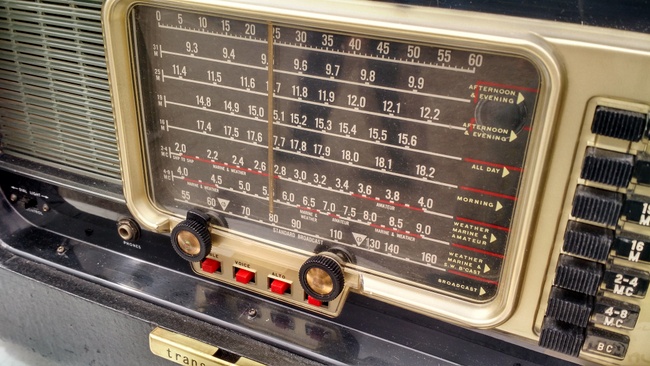Many thanks to a number of SWLing Post contributors who’ve shared a link to this excellent article by Denny Sanders in Radio World Magazine about the history of the Zenith Transoceanic:
Zenith Trans-Oceanic Radio in War and Peace
This iconic portable receiver was known for durability and quality
They say necessity is the mother of invention. Nothing proves this more than the story of how the iconic Zenith Trans-Oceanic portable radio receiver came into existence.
Commander Eugene McDonald (1886–1958), the founder of Zenith Radio, was a stickler for quality and insisted that any Zenith product represented cutting edge technology and design integrity.
He was also an accomplished yachtsman. During his many ocean voyages, he constantly was frustrated with the inability of any portable commercial radio set to perform reliably at sea. In about 1939, he ordered the Zenith R&D department to come up with a rock-solid, portable AM receiver sensitive enough to pull in signals from great distances. He insisted that the radio be a multi-band unit including shortwave, marine and aircraft bands.
The Zenith crew came up with a gem: the Trans-Oceanic, a gorgeous piece of engineering housed in a robust and dramatic cabinet designed by the brilliant Zenith industrial designer Robert Davol Budlong.[…]
Continue reading the full article at Radio World Magazine online.


Hello dear friends of Zenith radios,
being a collector of vintage radios and one of the directors of the Rhineland-Palatinate Radio Museum in Germany I would like to know which Zenith Transoceanics were the first ones to be able to receive FM.
Further questions: Which ones of them had tubes, which ones were solid state-radios?
Background: I would like to purchase an early version of a reliably working Transoceanic enabling me to listen to FM-programs in a good quality.
Best wishes from the Old World to the New World
Peter
The TO 3000 series introduced FM for the first time
I truly have to take exception with the author’s article. The B-600 was not the last of the “real” Transoceanic. The 1000 took Zenith as a brand in a whole new direction. The solid state movement was embraced by Commander McDonald. And the design of the 1000 came under his leadership, as the last project before his death. Yes, it is solid state. But also an amazing performer. I have an A-600, 1000, and 3000. All spectacular in their own way. The transistorized ZTO’s have a nice, mellow sound that, while different from the tube models, is still distinctive and iconic. I really feel the author based his viewpoints on what he owns, and felt content to call his “the last real Transoceanic”. Not at all true.
There is nothing like the sound of a tube radio, that’s a fact!
I have an L600 which puts it at about 1954. It still has the store promotional tags. I use a repro battery to power it, it’s stuffed with AA batteries. It does have a solid state replacement for that hard to find IL6, built in the correct glass envelope. Nice radio.
These are still great radios with a clean signal but selectivity is not one of their best qualities. A fairly large speaker in a resonant plywood cabinet makes for excellent room-filling sound. I have a military-issue tan leatherette B-500 and a late-issue black B-600 (my favorite). All have tubes with no solid-state replacements. You know the old saying “It’s portable because it has a handle on it”. That certainly applies with the Trans-Oceanic. With a full load of batteries these radios are good for weight training. I can enjoy great music on Radio Romania, RNZI and Voice of Greece with my T/Os in California off the long whip antennas alone.